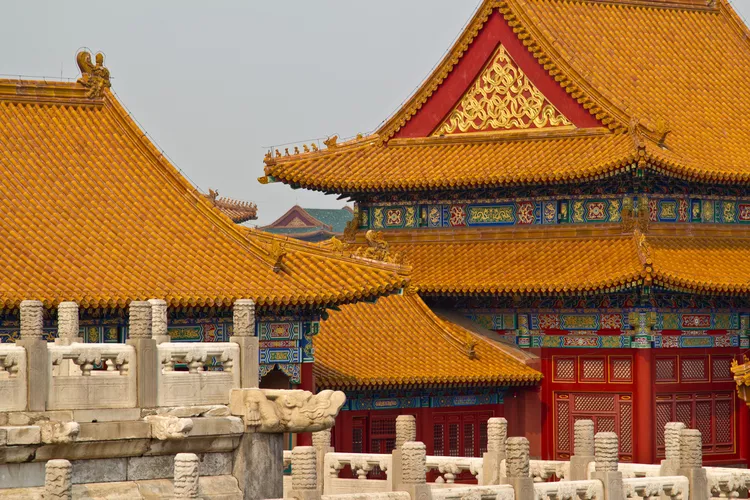Summary
4 Jing Shan Qian Jie, Dong Cheng Qu, Bei Jing Shi, China, 100009
Phone +86 400 950 1925
Named one of China’s UNESCO World Cultural Heritage Sites in 1987, the Forbidden City is probably China’s most well-known museum. Its famous red walls housed Ming and Qing emperors for nearly 500 years. Now, the halls, gardens, pavilions, and nearly one million treasures are visited and viewed by millions of tourists each year.
What You’ll See
Don’t be misguided by the term “museum” in its official title. Visiting the Palace Museum resembles a lengthy stroll through vast plazas, interspersed with glimpses into various official and residential buildings where the court and their minions ruled and lived.
The Forbidden City is situated in the heart of Beijing, directly north of Tiananmen Square.
History of the Forbidden City
The third Ming emperor, Yongle, constructed the Forbidden City between 1406 and 1420, relocating his capital from Nanjing to Beijing. Twenty-four successive Ming and Qing emperors ruled from this palace until 1911, when the Qing dynasty fell. Puyi, the last emperor, was permitted to reside within the inner court until his expulsion in 1924. Subsequently, a committee took charge of the palace and opened the Palace Museum to the public on October 10, 1925, after organizing over a million treasures.

Features
- Surrounded by 10m high walls and a 52m wide moat.
- Measures 961m from north to south and 753m from east to west, covering 720,000 square meters.
- Each side has one gate; tourists today enter through the southern Meridian Gate (Wu men) and exit through the northern Gate of Spiritual Valor (Shenwu men).
- Comprises 70 halls and palaces with a total of 9,999 rooms spanning a north-south axis.
- Features multiple galleries displaying parts of the imperial treasure trove.
Services
- Audio guides in multiple languages are available at the Meridian Gate (Wu men) and the Gate of Divine Prowess (Shenwu men). A deposit is required, which is refunded upon the return of the audio guide at the exit.
- Bag check at Meridian Gate (Wumen), but you’ll need to retrieve it at the end of your visit.
- Gift shops and snack options are available. Note that a previous Starbucks has been replaced with local offerings.
- An Information Center is located in the Archery Pavilion (Jian Ting).
Essential Information
- Public buses that stop at the Forbidden City: 1, 4, 20, 52, 57, 101, 103, 109, 111.
- Metro stops: Tian’anmenxi or Tian’anmendong on the East-West line.
- Opening hours: Daily year-round (closes slightly earlier in winter).
- Recommended time for visit: At least three hours.

Forbidden City Visiting Tips
- Visitors enter the Forbidden City from Tian’anmen Square through the large red wall featuring Mao’s portrait. This marks the southern end of the palace, and you will traverse the length of the complex to reach the northern end. Consider the logistical implications of this when scheduling your visit.
- Wear comfortable footwear and remember sun protection; the walk, with minimal stops, often takes 2-3 hours. Opportunities to rest are limited, as is shaded areas.
- Consider a guided tour for a richer experience where you can learn about the significance of the various buildings. Otherwise, the visit may turn into a series of similar structures without much context.
- If a guided tour isn’t in the works, an audio tour is a good alternative. The Roger Moore narrated guide stands out and enhances your engagement with the site.
- As you proceed through the Meridian Gate, keep an eye out for shops selling exquisite maps of the Imperial Palace. This unique souvenir is generally only found at the beginning of your visit.





